
How to Create Blog Content
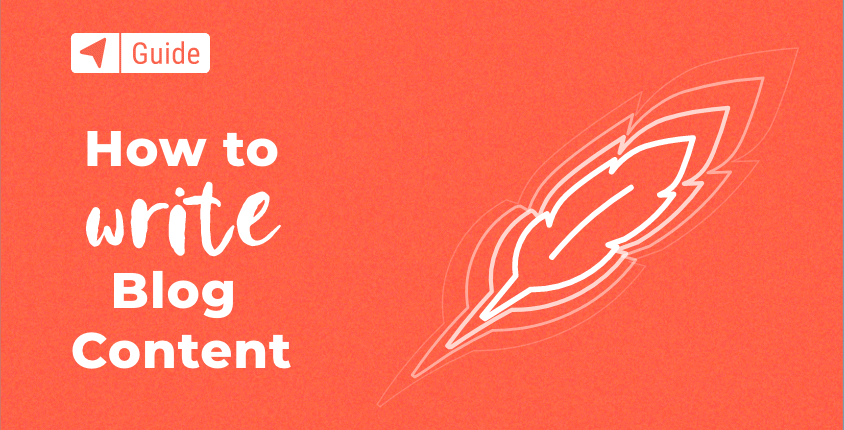
Before you start writing your day-to-day blog posts, you will want to make sure that the static pages and other parts of your blog, such as the sidebar and footer, are filled with suitable information. Let’s explore each of these content areas.
Step #1: Content for static pages
About page
The most traditional page on any blog is the About page. This page tells new visitors to your blog what it is about, who you are and why you have a blog about your particular topic. Depending on your niche and your style, the information you provide can be “all business” or personal and fun.
Contact page
This page allows visitors of your blog to communicate with you at any time. It can be a simple page with your email address plus social network links, or you can use plugins like Contact Form 7 to have a simple contact form that visitors can use to communicate with you without leaving your website.
Products/services
If you have created your blog to promote your business, you’ll want to make sure that there’s a page that details the goods and services that you sell. Alternatively, if you already have a website for your business, you can provide a link to it in your menu.
A blog is a low-cost, low-risk way to invite readers into your world and begin a conversation with your company. 68% of consumers are likely to spend time reading content produced by a company they are interested in.
Disclaimer/policy
For example, if you are writing a health blog, but you’re not a medical professional, you may want to create a disclaimer to say that you are not a physician or other healthcare provider and to recommend that readers see their doctors for medical information and evaluation.
Be sure to visit the best blogs in your niche, preferably larger ones, to see what pages they provide links for in their primary navigation menu and footer. Chances are, your visitors will be looking for the same types of pages on your blog.
Blog category pages content
To begin with, you will have to choose categories for your new blog. Depending on your main topic, you can have different categories. For example, if you are starting a food blog, your categories could be recipes, desserts, breakfast, and more.
The next step is to create short text for each category page that is going to be available on your blog. The text can be anywhere between 50-150 words. You might wonder why you need this text. The answer is that it will help these pages to rank better in search engines and users can easily understand what type of content is included under this category.

Step #2: Blog sidebar content
Your sidebar is the smaller column to the left or right (depending on the theme you selected) of your blog’s main content. You can add the following content in sidebar widgets for your visitors to see. You don’t have to add all of the sections described below, but these are some common sidebar contents sections people have on their blogs.
Subscribe
Encourage visitors to your blog to subscribe via email or RSS. Email, of course, is best, especially if you would like to monetize your blog in the future. MailChimp is a great service to use as it is free for the first 2,000 subscribers.

About
It’s helpful to include a simple sentence or two about you and your blog for new visitors who may not take the time to read your About page. Having your photo included in this blurb of text helps visitors to put a face to the blog, whether you are the owner and editor managing other writers, or the primary content author.

You can also display links to your social profiles so that people can follow you. You can use icons to represent each network or use official boxes, buttons, and badges from these networks. The latter helps you to build your social media audience by allowing people to connect with you without leaving your website.
Popular posts
A popular posts widget will help direct visitors to your top pieces of content. WordPress Popular Posts plugin will help you to create this easy, displaying posts based on comments and view count.

Advertisers
If you plan to add advertising banners to your blog, then add them from the start, so that regular visitors will not be surprised when you do start gaining advertisers. The banners you use until then can link to products for which you are an affiliate marketer or to products that you simply like.
Step #3: The 6-Point Framework of a Persuasive Blog Post (Plus an Outline You Can Steal)

1. Likeability: If your readers don’t like you, everything else is irrelevant. Naturally, people are skeptical of perfection. So be vulnerable, tell your story, and document the imperfections. Eighty-six percent of consumers say authenticity is important when choosing a brand to do business with.
2. Credibility: Your readers not only need to believe in you, but they need to believe in their own ability to produce results. That’s where providing easily consumable and actionable content comes into play. A great way to create more bite-sized content is to add images every 100 words or so. In fact, images can boost content credibility by 75 percent.

Why does the information in your blog post matter today? A genius way to insert call-to-action in your post is to create content upgrades. Backlinko improved their conversion rates by 785 percent (in one day!) using this method.

4. Authority: Your authority is increased by creating comprehensive, data-driven content with unique insights. The more authority you command, the more people will bet on you to deliver the transformation that they seek.
5. Reciprocity: Attention is currency in the online space. So when someone gives you their attention, you reciprocate by providing value with no strings attached. In fact, giving away your best content for free can help you reap big rewards.
If you’re shaky with your ideas or complacent about the way that you express them, you won’t hold up to scrutiny. A study of 27,000 consumers revealed that consistency is critical for trust and loyalty.

Step #4: Flesh Out Your Outline In Record Time

I suggest putting on some concentration music and diving into the outline. I also use a digital timer to keep myself from getting pulled down rabbit holes. Sure, you could spend two hours researching — but you’ll create better content if you can stay focused.
Craft a Heavy-Hitting Hook (5 Minutes)
Rule #1: Be super-specific. Use numbers in your headline and avoid ambiguous words like amazing, awesome, and great. There are other lackluster words that put readers to sleep, but these are the likely culprits.
Rule #2: Flirt, don’t reveal your total solution. If you uncover your solution right away, there’s no incentive to keep reading. Be mindful that there is a fine line between a curiosity-infused headline and desperate clickbait.
Write A Magnetic Opening (5 minutes)
Rule #2: Aggravate the problem and use emotive language to paint a picture of your big promise. Here are 801 power words that you can use to create an emotionally gripping narrative.
- The Quote Lead: Use a quote relevant to your blog post. Your readers should be able to recognize the author of your quote so it’s best to use an influencer in your niche.
- The Impending Danger Lead: This is where you introduce an evil villain and lean strongly on emotion.
- The Counterintuitive Lead: Open by presenting a solution which goes against the grain.
- The Empath Lead: Let readers know that you understand how they feel, you’ve walked in their shoes, and that they’re not alone.
- The Shock Value Lead: Open with an unexpected fact.
- The Storytelling Lead: An intriguing tale goes a long way to draw readers in. It could be true or metaphorical, as long as it’s within the context of your blog post.
- The “Get Right To It” Lead: The no fluff, “I won’t waste your time” lead. You have to establish the premise of your post right away.
- The “Call Out” Lead: Have the audacity to call your reader out. Do they have a bad habit that’s keeping them in the dark? What are they complacent about?
- Pop Quiz Lead: Open by providing a list of options and set it up where there can only be two or three outcomes.

How to Create a Blog Content Strategy – What 4 Years of Experience Have Taught Me
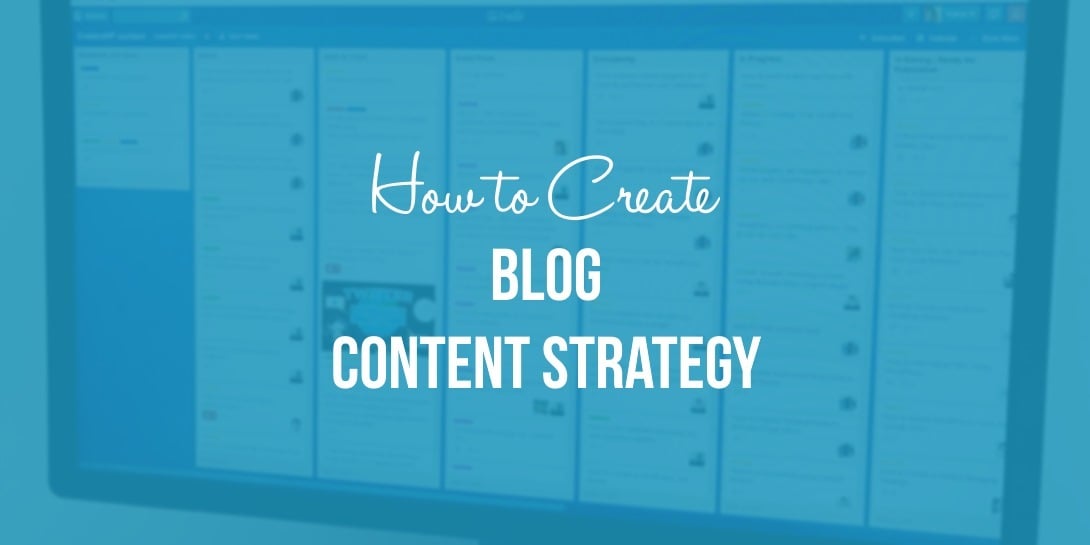
You basically double your chance of success with a written blog strategy. According to Content Marketing Institute, 60% of organizations with a written content strategy are effective, compared to only 32% of those with a purely verbal content strategy being effective.
Not only does a written plan increase your chances of success, it also saves you hours of time you would have wasted on the wrong promotion strategies, writing about the wrong topics, and working with the wrong influencers.
Five Steps to Craft a Blog Content Strategy
Step 1: Define your goals.
If you don’t take anything else away from this article, take away goal-setting. Having a clearly defined goal will set you up to push through all the other steps, all the hours of writing, and all the obstacles bound to show up.
Just take a look at Simon Sinek’s TED talk about the power of “why”. It’s 20 minutes of pure gold (seriously, go watch it) about why we need to lead from a place of “why” we’re doing something, not how we’re doing it or what we’re doing. His diagram looks like this:
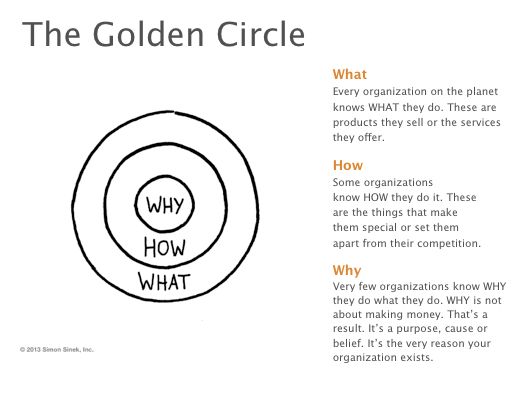
For example, I have a blog for my freelance work. My primary goal is to generate leads for my services, with secondary goals of educating prospects on what I do and building a brand around my name.
Be specific with your goals. Simply saying “get more traffic” isn’t enough. You need to include how much traffic you want and in what timeframe. A better goal would be “Increase sales by 15% in three months”. Very specific.
Step 2: Perform some target market research.
Let me ask you something; Have you ever taken a shower and you just couldn’t quite get the water to the right temperature? It was lukewarm, so you turned it juuuust a hair, then it was scalding hot?
While frustrating, it shows you how a very small amount of effort can cause something to go from lukewarm to hot. You’ve heard this before – it’s called the extra mile.
Successful blog posts follow the old Problem Agitate Solution (PAS) copywriting principle. They begin by introducing the root problem reader’s are facing. Then they agitate those problems by digging into the symptoms and pain points. Finally, they present a solution (whether that’s an idea, tip, hack, or simply positioning their product/service as the solution).
But, you can’t do that effectively without understanding (1) what you’re readers are trying to achieve, (2) what’s preventing them from doing it, and (3) what’s going to happen to them if they don’t achieve it.
Find the answers to those three questions (using surveys, interviews, etc.) and you’ll be able to create blog content that does a hell of a lot more than just rack up social shares. Brad Smith
Step 3: Come up with topic ideas and keywords to target.
Keywords are the bread and butter to an effective blog content strategy. Without them, you’re going to be hard-pressed to rank well on search engines. Without ranking on search engines, you’ll have an even harder time getting a lot of consistent traffic.
Of course, there are plenty of other complications like page load speed, time spent on page, and (for Bing, at least) the number of shares the article received. But, if you master the three things above, you’ll be on your way to the first page of Google.
Keyword research is a great way to come up with new ideas and opportunities for content, but SEO should not drive your entire content strategy. It should factor in, but not fully control, the topics and message of your content. You may find an opportunity for a specific keyword, but you should then combine that information with your knowledge of your target market and personas to write the best possible content. Cara Hogan
I wrote a blog post about the book “Crossing the Chasm” and applied the lessons of that book to various startups. The SEO for Crossing the Chasm is impossible because it’s a hugely popular book. So, Amazon and a number of links associated with the author are always going to be first.
However, that post was hugely successful and garnered a lot of traffic simply because it gave practical and real-world examples for startup leaders to understand a specific concept within the book. So, when you google “crossing the chasm” the book is always going to be first, but if you google “startup crossing the chasm”, my post ranks #3. Cara Hogan
Step 4: Create a blog content calendar.
A content calendar keeps you on track and creates a system to ensure your content is always top-notch and published on time. The best calendars also have social sharing and email marketing info baked in to make things organized and easy.
To help explain the importance of this step and how it plays into your overall blog content strategy, I asked Cameron Conaway, an investigative journalist and content marketing manager at Klipfolio, his thoughts on creating a content calendar. Here’s what he told me:
It allows us to make real-time updates, organize all content assets, and have end-to-end visibility into who is working on what, when each piece is due, and which persona and stage of the funnel each piece of content is for.
This allows us to go from half-baked idea to pitch to “Yo Editor”—a column we created where a writer can @ their editor if they’re stuck or ready for an edit on their first draft. Cameron Conaway
Source:
https://firstsiteguide.com/write-content/
https://neilpatel.com/blog/how-to-write-blog-post/
https://themeisle.com/blog/blog-content-strategy/
How to Create Blog Content
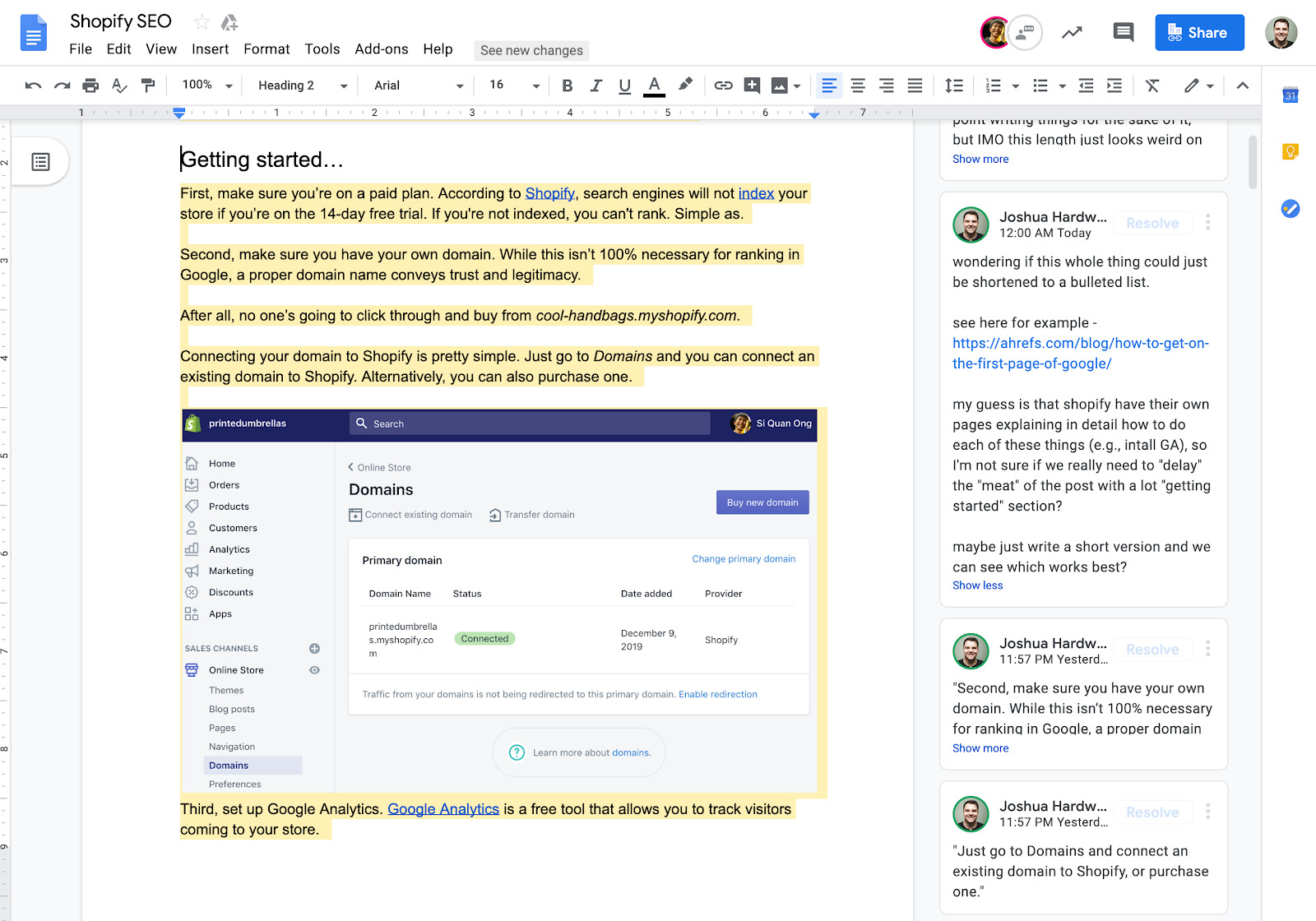
How to Create Blog Content

Before you start writing your day-to-day blog posts, you will want to make sure that the static pages and other parts of your blog, such as the sidebar and footer, are filled with suitable information. Let’s explore each of these content areas.
Step #1: Content for static pages
About page
The most traditional page on any blog is the About page. This page tells new visitors to your blog what it is about, who you are and why you have a blog about your particular topic. Depending on your niche and your style, the information you provide can be “all business” or personal and fun.
Contact page
This page allows visitors of your blog to communicate with you at any time. It can be a simple page with your email address plus social network links, or you can use plugins like Contact Form 7 to have a simple contact form that visitors can use to communicate with you without leaving your website.
Products/services
If you have created your blog to promote your business, you’ll want to make sure that there’s a page that details the goods and services that you sell. Alternatively, if you already have a website for your business, you can provide a link to it in your menu.
A blog is a low-cost, low-risk way to invite readers into your world and begin a conversation with your company. 68% of consumers are likely to spend time reading content produced by a company they are interested in.
Disclaimer/policy
For example, if you are writing a health blog, but you’re not a medical professional, you may want to create a disclaimer to say that you are not a physician or other healthcare provider and to recommend that readers see their doctors for medical information and evaluation.
Be sure to visit the best blogs in your niche, preferably larger ones, to see what pages they provide links for in their primary navigation menu and footer. Chances are, your visitors will be looking for the same types of pages on your blog.
Blog category pages content
To begin with, you will have to choose categories for your new blog. Depending on your main topic, you can have different categories. For example, if you are starting a food blog, your categories could be recipes, desserts, breakfast, and more.
The next step is to create short text for each category page that is going to be available on your blog. The text can be anywhere between 50-150 words. You might wonder why you need this text. The answer is that it will help these pages to rank better in search engines and users can easily understand what type of content is included under this category.

Step #2: Blog sidebar content
Your sidebar is the smaller column to the left or right (depending on the theme you selected) of your blog’s main content. You can add the following content in sidebar widgets for your visitors to see. You don’t have to add all of the sections described below, but these are some common sidebar contents sections people have on their blogs.
Subscribe
Encourage visitors to your blog to subscribe via email or RSS. Email, of course, is best, especially if you would like to monetize your blog in the future. MailChimp is a great service to use as it is free for the first 2,000 subscribers.

About
It’s helpful to include a simple sentence or two about you and your blog for new visitors who may not take the time to read your About page. Having your photo included in this blurb of text helps visitors to put a face to the blog, whether you are the owner and editor managing other writers, or the primary content author.

You can also display links to your social profiles so that people can follow you. You can use icons to represent each network or use official boxes, buttons, and badges from these networks. The latter helps you to build your social media audience by allowing people to connect with you without leaving your website.
Popular posts
A popular posts widget will help direct visitors to your top pieces of content. WordPress Popular Posts plugin will help you to create this easy, displaying posts based on comments and view count.

Advertisers
If you plan to add advertising banners to your blog, then add them from the start, so that regular visitors will not be surprised when you do start gaining advertisers. The banners you use until then can link to products for which you are an affiliate marketer or to products that you simply like.
How to write SEO content

1. Find a proven topic
If you sell baking supplies online, then this might be recipes for baked goods, cookware reviews, or other things related to baking.
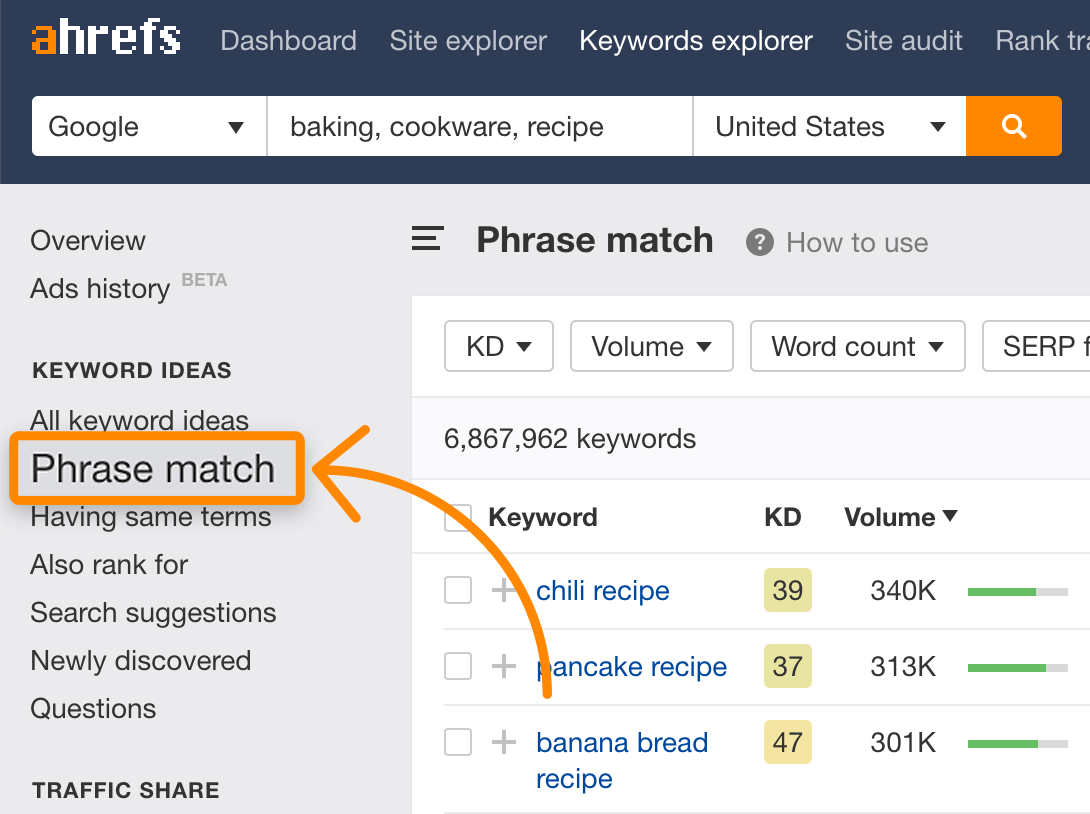

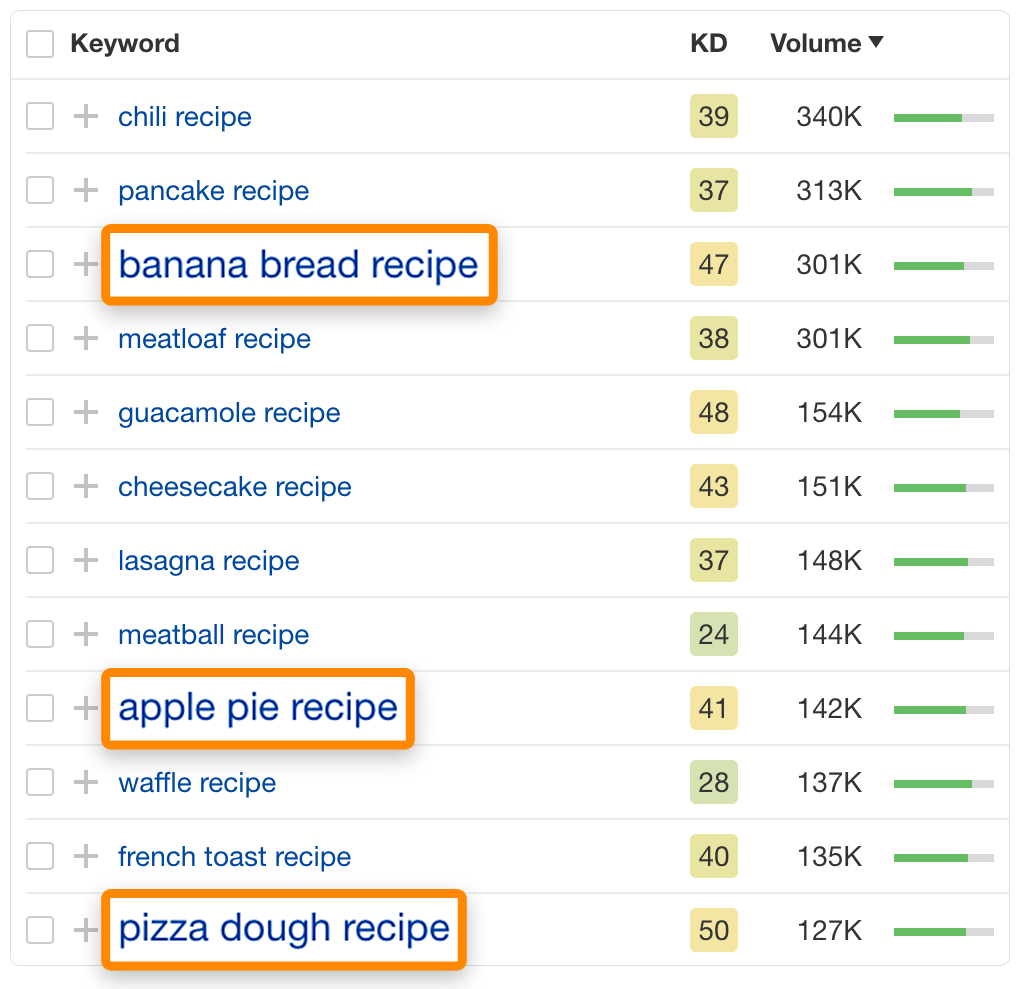


2. Analyze search intent
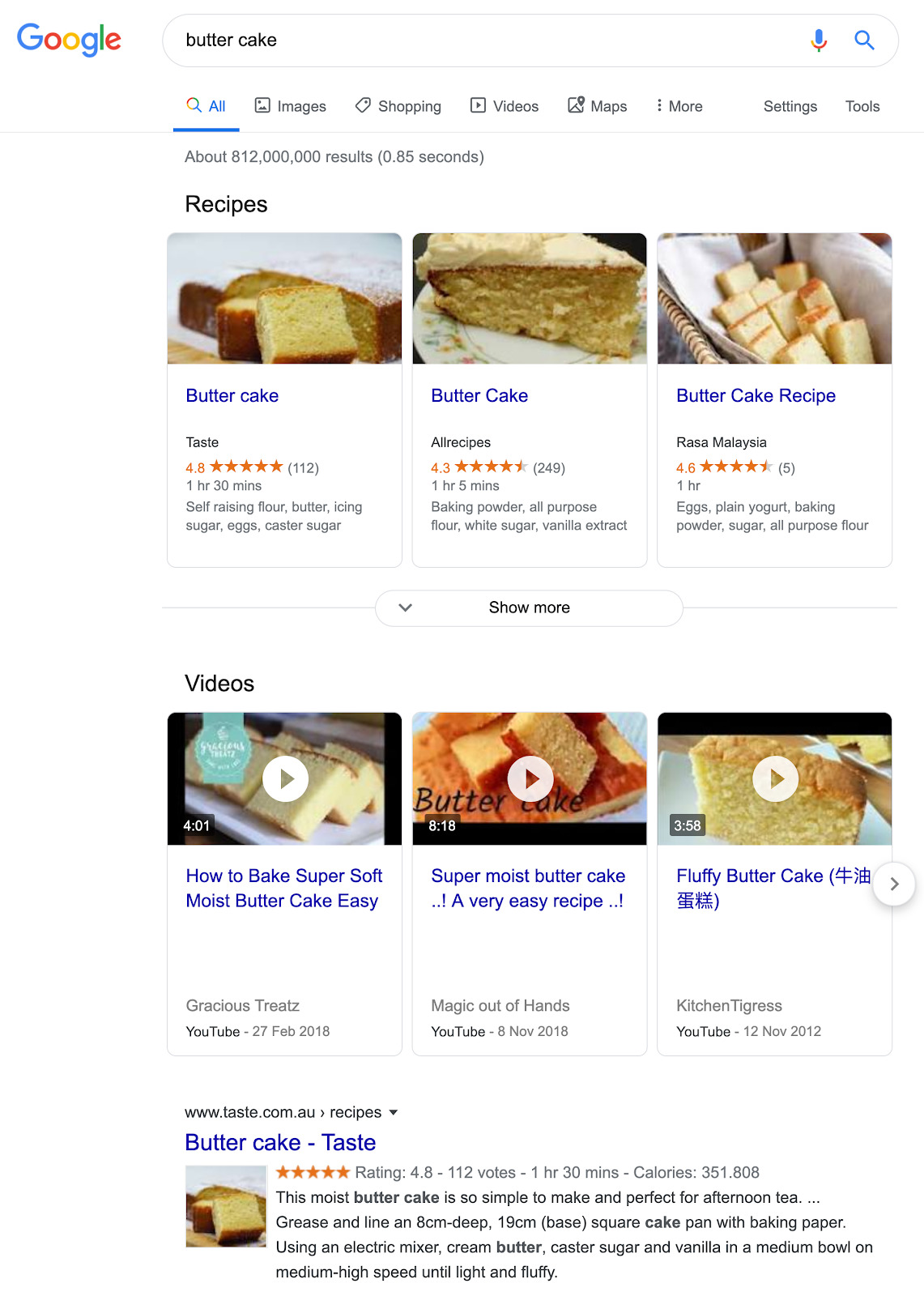
Content type
Content format

Content angle
Look at the page titles to understand more about the type of person searching for this. Are they a beginner or an expert? What do they value? Are they looking for a quick solution or something more in-depth?
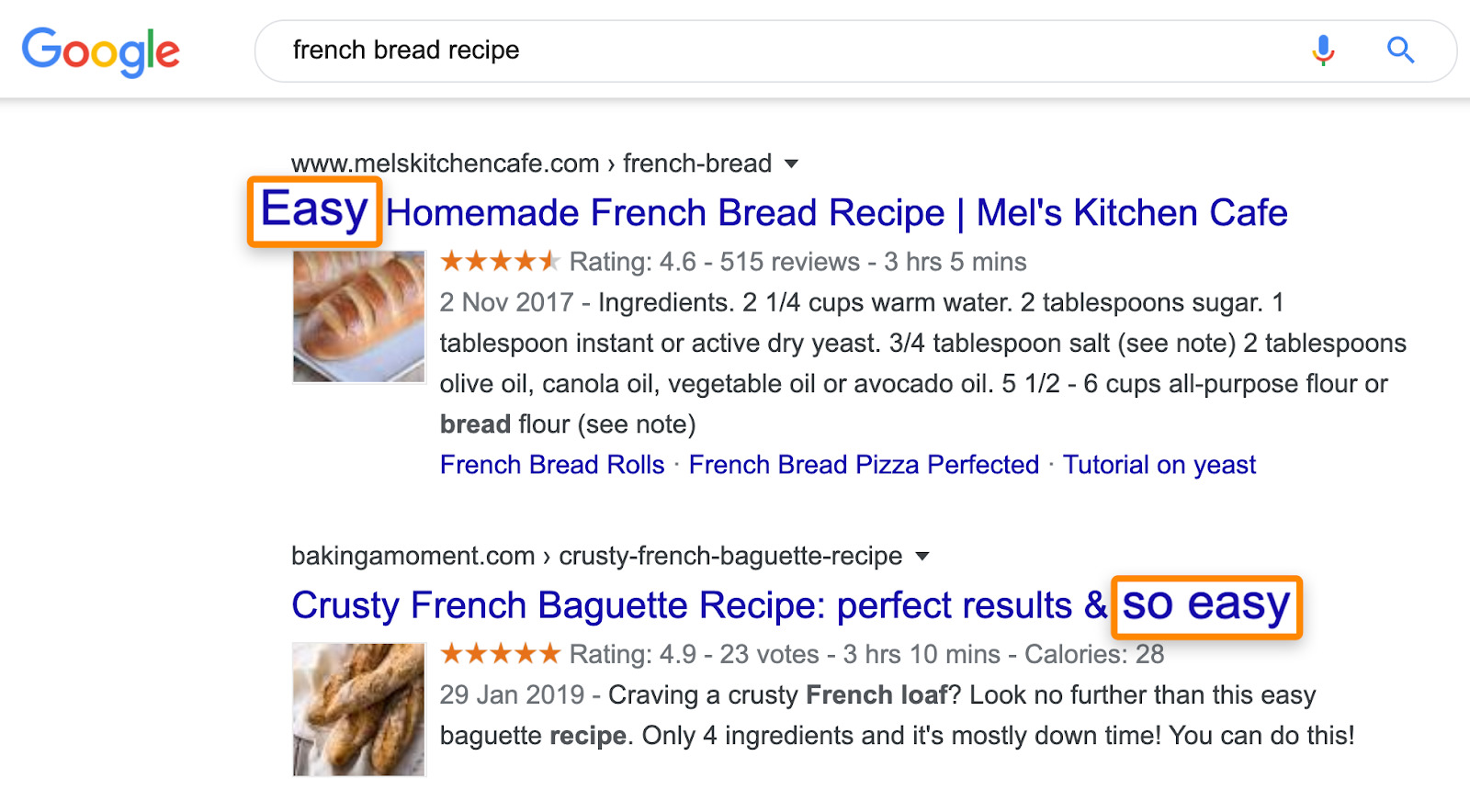
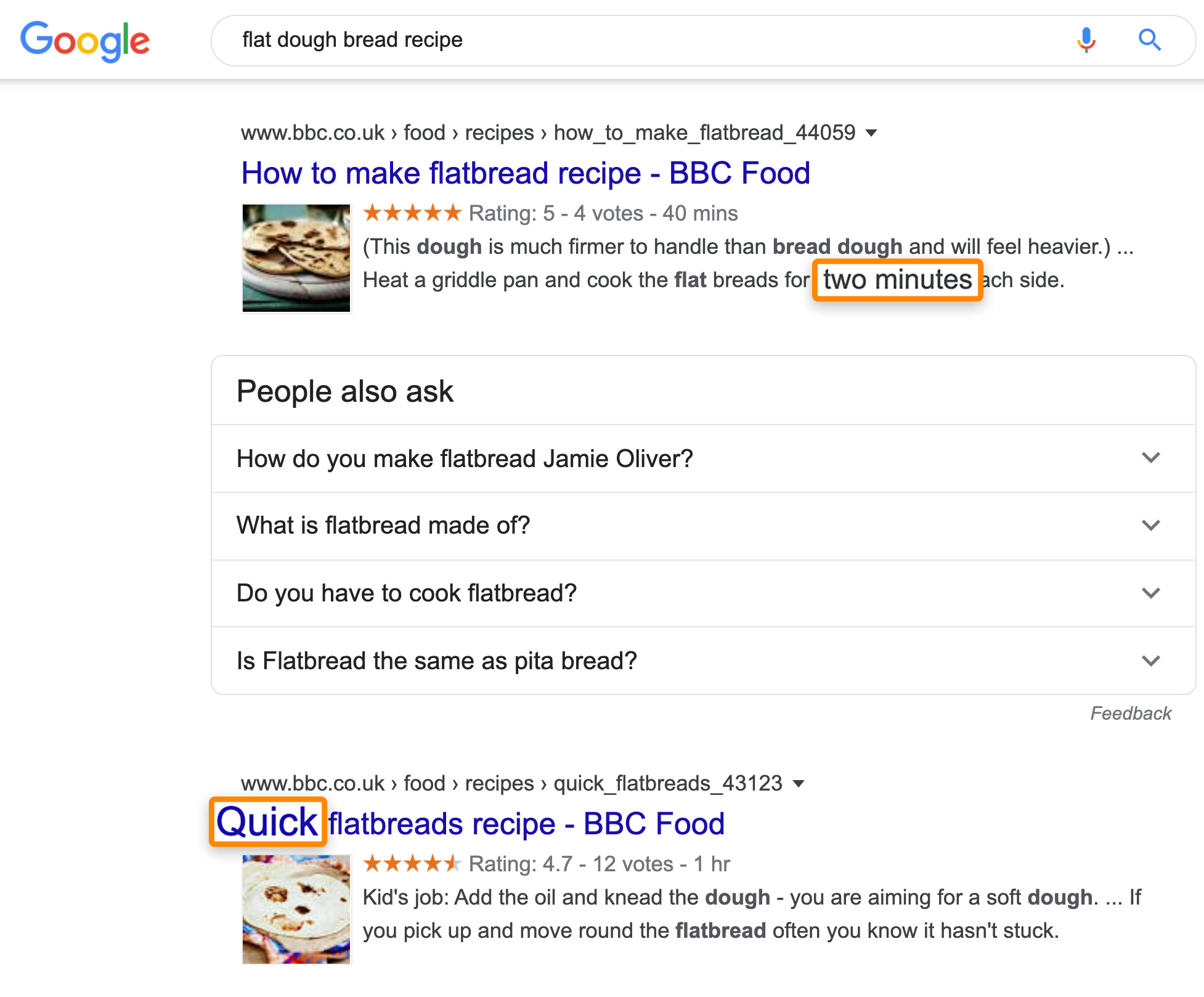
3. Write a data-driven outline
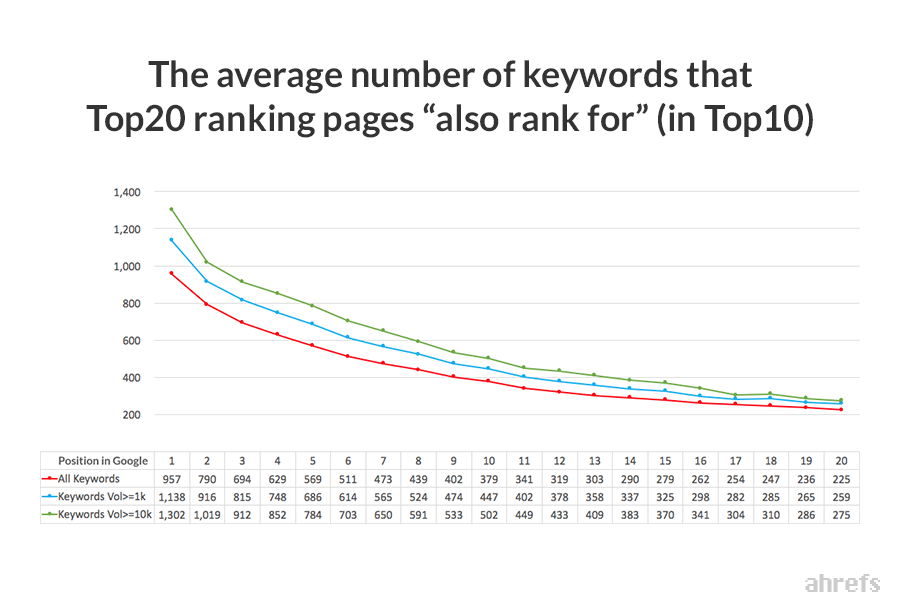
Paste the URL of the top-ranking page into Ahrefs’ Site Explorer, then go to the Organic keywords report. To weed out irrelevant keywords, filter for keywords where the page ranks in position ten or higher.

You’ll probably notice that many of these are synonyms or less popular ways to search for much the same thing, but some should give you insight into what searchers want to see from this page.

For example, if we were writing a flatbread dough recipe, we’d probably want to mention speed in the intro, and we might want to have separate sections on making the flatbread with and without yeast.
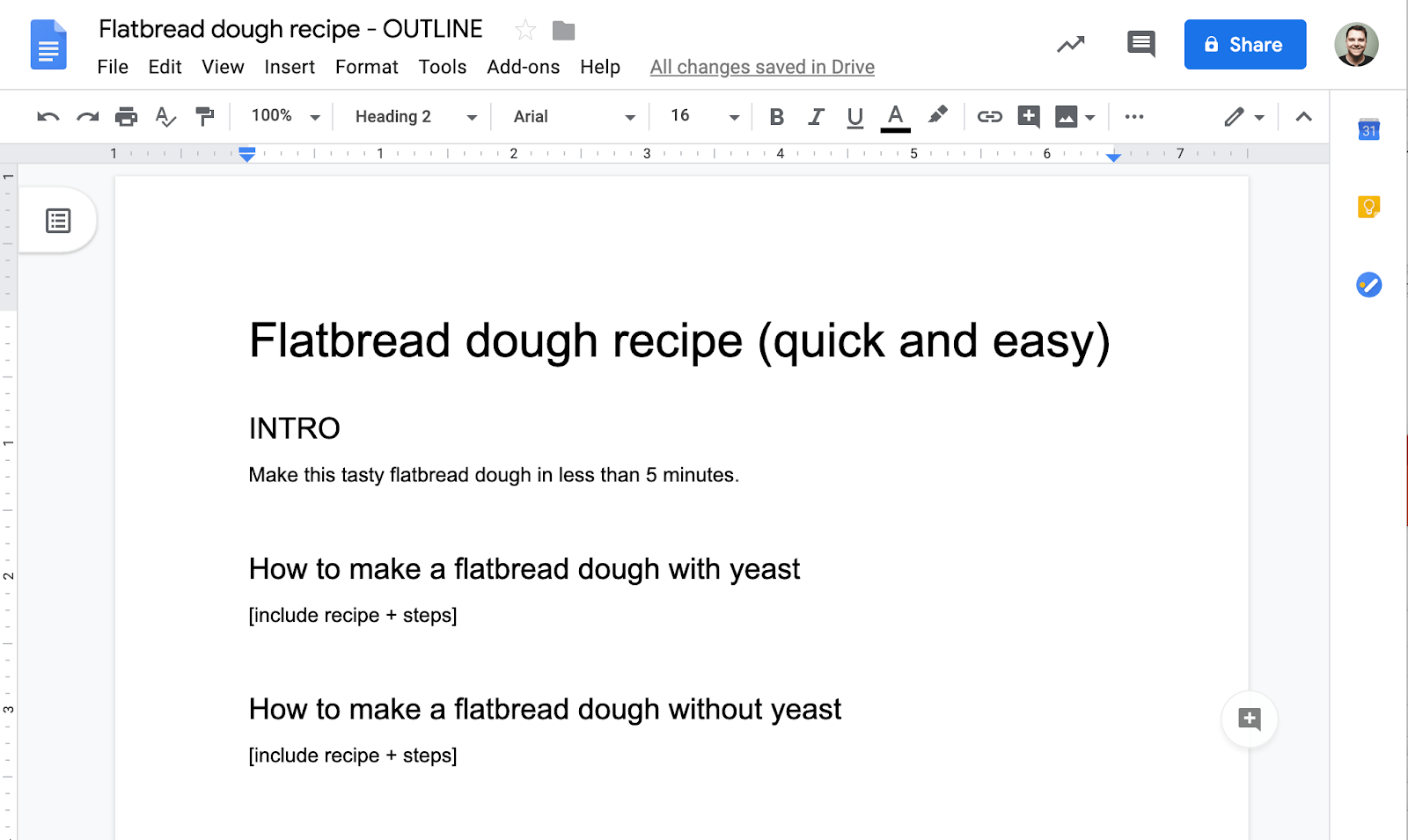
4. Write a draft
Because this doesn’t have much to do with SEO, we won’t dwell on this process too much. Just remember that the aim here isn’t to write a perfect draft right off the bat, but rather to turn your thoughts into something tangible to work with.
Write as you speak
Use the Pomodoro technique
Most people type at around 40 words per minute, so that’s 1,000 words in 25 minutes. However, drafting a blog post is more mentally taxing than just typing, so let’s assume 30-40% efficiency, or 300-400 words every 25 minutes.
5. Edit your draft
Not only is this good for conversions (which is ultimately the point of ranking), but it also has a positive impact on user engagement metrics like time on page, dwell time, and bounce rate, which some SEOs believe may indirectly influence rankings.
Correct spelling and grammatical errors


Make sure it flows
Keep it simple

Prepare for quality writing time
You probably need to get away from distractions or interruptions in order to write a good blog post. (Turn off electronic notifications, at least during your work blocks.) You probably have equipment you prefer. You might have a little ritual that gets your writing brain going.
For blog content, I like to start with some subheads. They form an inherent structure (kind of like the framework you’d grow a tomato plant on) that you can quickly eyeball to see if the final version will be relevant and useful.
Once your framework is in place, you can start anywhere. You don’t need to start at the beginning to write a good blog post — just jump in where you feel moved, and draft a paragraph or two.
You probably won’t be ready to complete the draft yet. (If you are, just move to the next step.) But capture any words or phrases that occur to you. Expand any points, make a few notes of stories or examples, and track down the links you’ll want to refer to.
Reader Interactions
You might also like:
How to Overcome Writer’s Block with Neuroscience
10 Timeless Persuasive Writing Techniques
The 5 Things Every (Great) Marketing Story Needs
How to Make Money as a Freelance Writer: 15 Writing Business Essentials
Quit Annoying Your Audience! 3 Simple Steps to Write Better Content
Reader Comments (30)
Nice post. What works for me, whether it is a post or a report or anything longer than one page text, is starting with end in mind (© S. Covey) and so called “snowflake method”. I start by outlining the end and then work on the content quite similary to what is described in “setting stakes” part of the post working from general to specific gradually developing the content. I think this is the best method for those who have tendency to ramble and digress (like me). If I had to represent it visually it would be a fishbone diagram rather than a mind map.
I have learned this; everything flows to you. Ideas. Seedlings. All flows your way. If you try to stalk ideas, or desperately grab at ideas, these post ideas will flee. Because force negates. But if you take a nice walk or pull back for even 5-10 minutes, to chill, and to allow the tension to dissolve, you will let in the idea.
I wrote and published my 300th guest post on Blogging Tips today. Toss in 300 plus video posts on the Huffington Post and hundreds other guesties and I have seen how relaxing, slowing down and calming down, user power and not force, can help you become kinda prolific 😉
It takes a little time to develop that habit of “pruning” away what’s not relevant to this piece of content, but when you start to realize how many starts you now have for new pieces, it gets pretty natural. 🙂
I really like the seedling analogy. It makes a lot of sense to create a whole bunch of potential topics, nurture them a little bit and see whether they develop.
I also like the concept of simply offloading all of your thoughts into the document and then to spend 2-3 times as long pruning, thinning and shaping that article. It makes a lot more sense then sitting there straining over the words and trying to get it perfect from the outset.
When I sit down to write I tend to start with the same phrase every time. It’s never going to be the start of my post but it gets me writing and then I’ll keep going. For example. Hello and welcome to this wonderful blog post on…
I did Morning Pages for quite a few years, these days I just scribble things in my bullet journal without quite such a formal practice. That scribbly time is surprisingly helpful for creative productivity. Or maybe by now, I shouldn’t be surprised any more. 🙂
Love the idea of seedlings – right now I am looking after my 92 year old mum for a couple of weeks and minding the grandchildren. Many seedlings have arisen from those very facts even if I am far too busy to repot them at the moment. That said, posting on my blog keeps the creative juices flowing and I have reused some seedlings from a few years ago for the latest post. I have had different writing spaces over the years. They range from a bedroom when children were small to a barn attached to our house more recently. Today I have a desk in the centre of the house as I find I write best when life goes on around me. I would say it is essential to have the ability to ‘zone out’ when necessary though. I did write an entire novel in the garden one summer because the smell of honeysuckle was so inspiring…
I’ve never been good at sitting down at a screen and coming up with great ideas. Like u mentioned, I seem to do better going “low-tech” (pencil and paper) for the bones of a post. Also, I try to never publish something in the same sitting that I “complete” it, as i always find final improvements after taking a walk. thanks for the post!
Loved all the tips but my favourite one is about the sub-heads and their importance. They act as the framework/skeleton of your blog post and so important to let the reader scan through the things if he is in a hurry.
The additional point I learnt from this article is that you mentioned to start from anywhere within these sub-heads. This gives more flexibility. I have always started from the first sub-head and finished on the last. I am going to try your recommendation now to start anywhere and whatever I feel best about to write about.
Since I write from personal experience on my blog, and have only been doing it a few months, I still have a lot of material to write about. Deciding what I want to write about next is my biggest problem right now, but I have come up with additional ideas about future posts while discussing things with my partner. It would probably work with other people discussions, he’s just the only human I really ever speak to, since I work from home and am surrounded by 10 cats and dogs. Loved the kittens with ADD analogy! lol I can soooo relate. lol
Resource:
https://firstsiteguide.com/write-content/
https://ahrefs.com/blog/seo-content/
https://copyblogger.com/write-a-good-blog-post/



